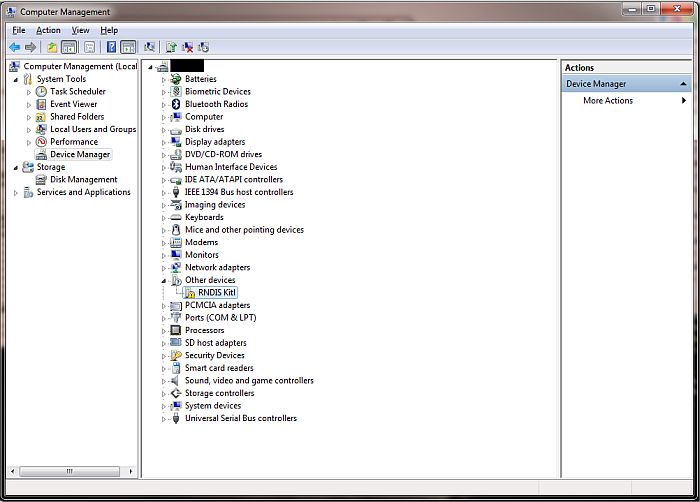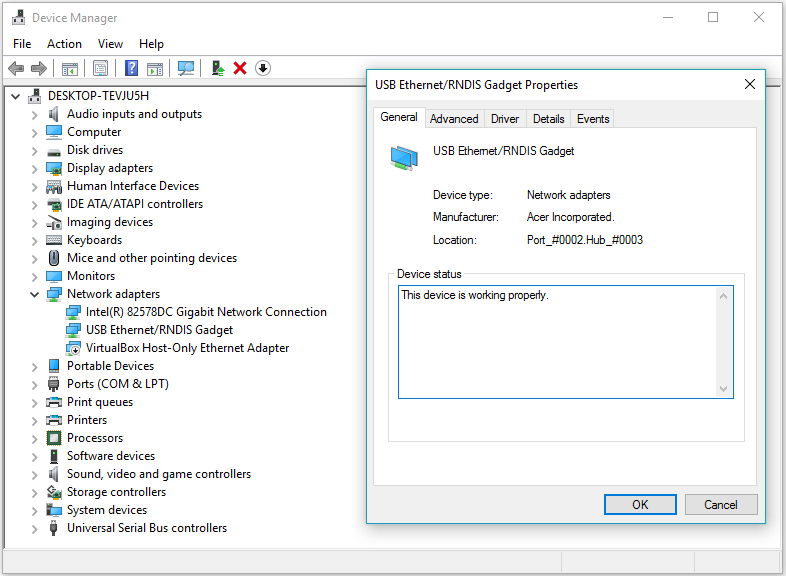

- #Remote ndis compatible device driver update install
- #Remote ndis compatible device driver update drivers
- #Remote ndis compatible device driver update update
- #Remote ndis compatible device driver update windows 10
- #Remote ndis compatible device driver update android
This is a nice try if you run into the issue after updating a certain network driver. Solution 2: Roll Back Network DriverĪccording to the report of some users, they have fixed the ndis.sys failed error simply by rolling back the recently-installed network drivers.
#Remote ndis compatible device driver update install
Note: If your Windows fails to find the latest version of the driver, you can download it from the driver’s official website and install it manually.Īfter that, you can restart your computer to see if the ndis.sys error has been solved.
#Remote ndis compatible device driver update update
Right-click the target driver and choose Update driver from the context menu. Step 2: Now, locate the driver with a yellow exclamation mark or your network driver. Input devmgmt.msc and click OK to launch Device Manager. Step 1: Press Windows + R to open Run window. Just follow the steps below to update drivers. If no yellow exclamation mark appears, you’d better focus on your network adapter. You should pay attention to the driver with a yellow exclamation mark, which indicates that there are some problems with this driver.
#Remote ndis compatible device driver update drivers
Thus, you are recommended to update your device drivers in Device Manager at first. Just employ these solutions one by one until you remove the ndis.sys error successfully.Īs mentioned before, an outdated or corrupted device driver is the most common reason for ndis.sys latency or blue screen error.
#Remote ndis compatible device driver update windows 10
So, what can you do to fix this ndis.sys failed error? Just continue reading this guide to get feasible troubleshooting.Ĭomplete Guide to Fix Ndis.sys BSOD Error in Windows 10 After all, it is essential for the normal functioning of your Windows and it will restart automatically if you disable it.

Some users have tried disabling the ndis.sys to fix this error, but you are not recommended to do so. Of course, there are some other potential reasons. The most likely factors of this error are as follows: However, various factors may lead to problems related to ndis.sys file, like ndis.sys failed BSOD (with the error message driver_irql_not_less_or_equal), high latency and so on. This ndis.sys file is stored in the path of C:\Windows\System32\drivers by default.Ĭommonly, the file won’t bring any damages to your computer or affect computer performance. It is related to Network Driver Interface Specification and is a repository of system driver settings used by Windows to communicate with connected devices and hardware. Ndis.sys, a critical system file developed by Microsoft, is an essential part of your Windows operating system. It is designed to help the computer system to communicate with other connected devices and hardware on a computer network. NDIS is short for Network Driver Interface Specification which is one of the legitimate components of Windows operating system.


#Remote ndis compatible device driver update android
It is a Microsoft proprietary protocol, which is often used on top of USB. As a protocol, RNDIS provides a virtual Ethernet link to most versions of the Windows, Linux, Android and FreeBSD operating systems. RNDIS is short for “Remote Network Driver Interface Specification”. More importantly, you should be able to fix it pretty easily… What is RNDIS? Many Windows users have reported the very same issue. Seeing a yellow warning icon next to RNDIS in Device Manager? Don’t worry… Although it’s incredibly frustrating, you’re definitely not the only person to experience this problem.


 0 kommentar(er)
0 kommentar(er)
